Category: Turning
-

A Few More Pens – Laburnum, Maple, Tigerwood, Sycamore
More pens resulting from my latest hobby / obsession. It’s somewhat ironic that somebody who can’t write (not with a pen at least) has found so much enjoyment and satisfaction in making these.
-

More Padauk Pens
More pens in Padauk wood, mostly using slimline and ‘fancy’ pen kits. I’ve discovered that the quality of the bushings you use to set your diameters when turning these is extremely important.
-

Pens in Padauk and Laburnum
Laburnum wood is not a widely used timber but possesses a distinct character that makes it interesting to turn. It has a rich golden-brown hue, often with darker streaks and irregular figuring.
-
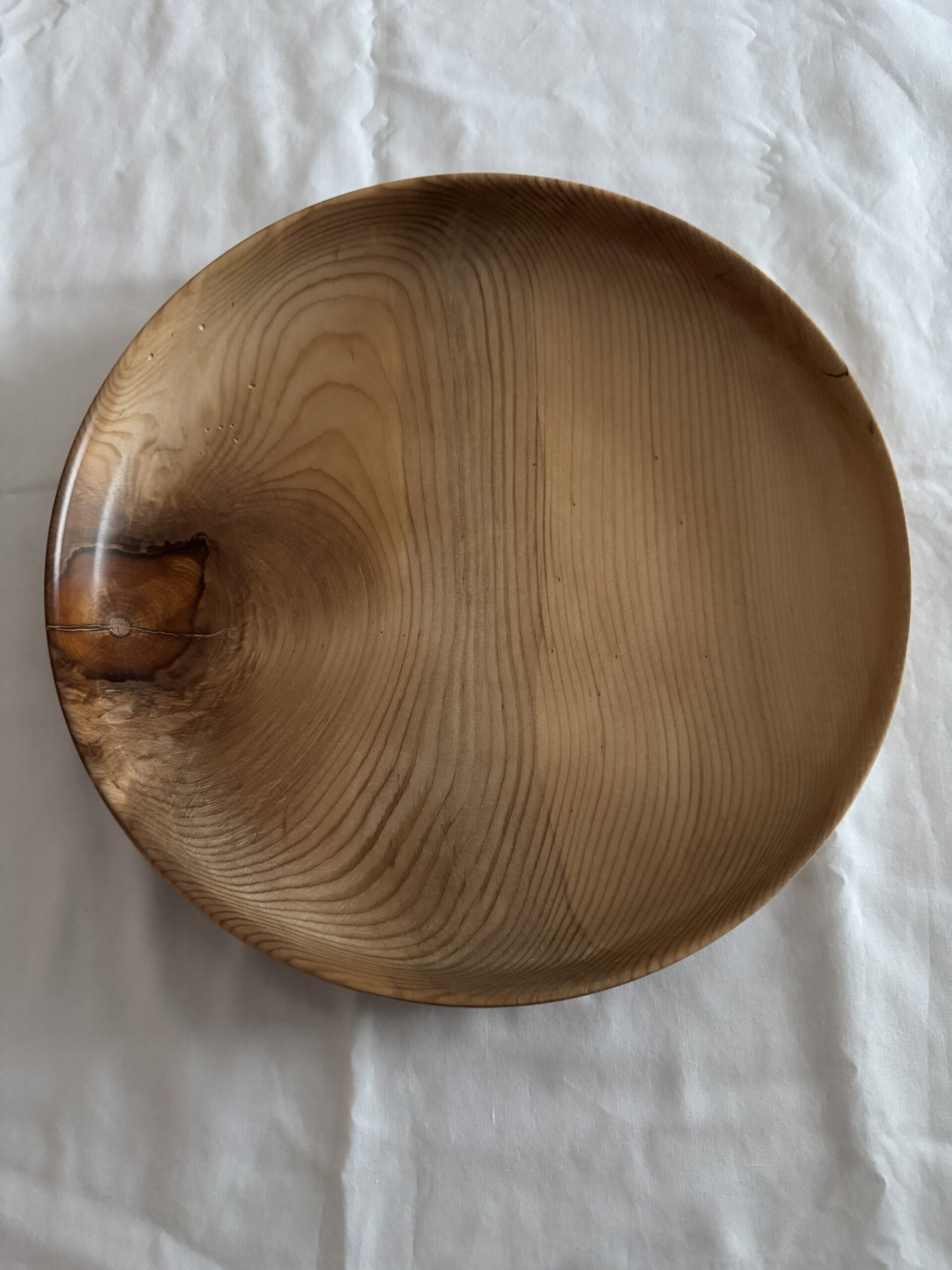
Monkey Puzzle Bowl
On my last trip to my preferred wood supplier, he handed me a piece of Monkey Puzzle and challenged me to turn it. It was a cutting that, he said, would be uncommonly tricky and he wasn’t wrong.
-
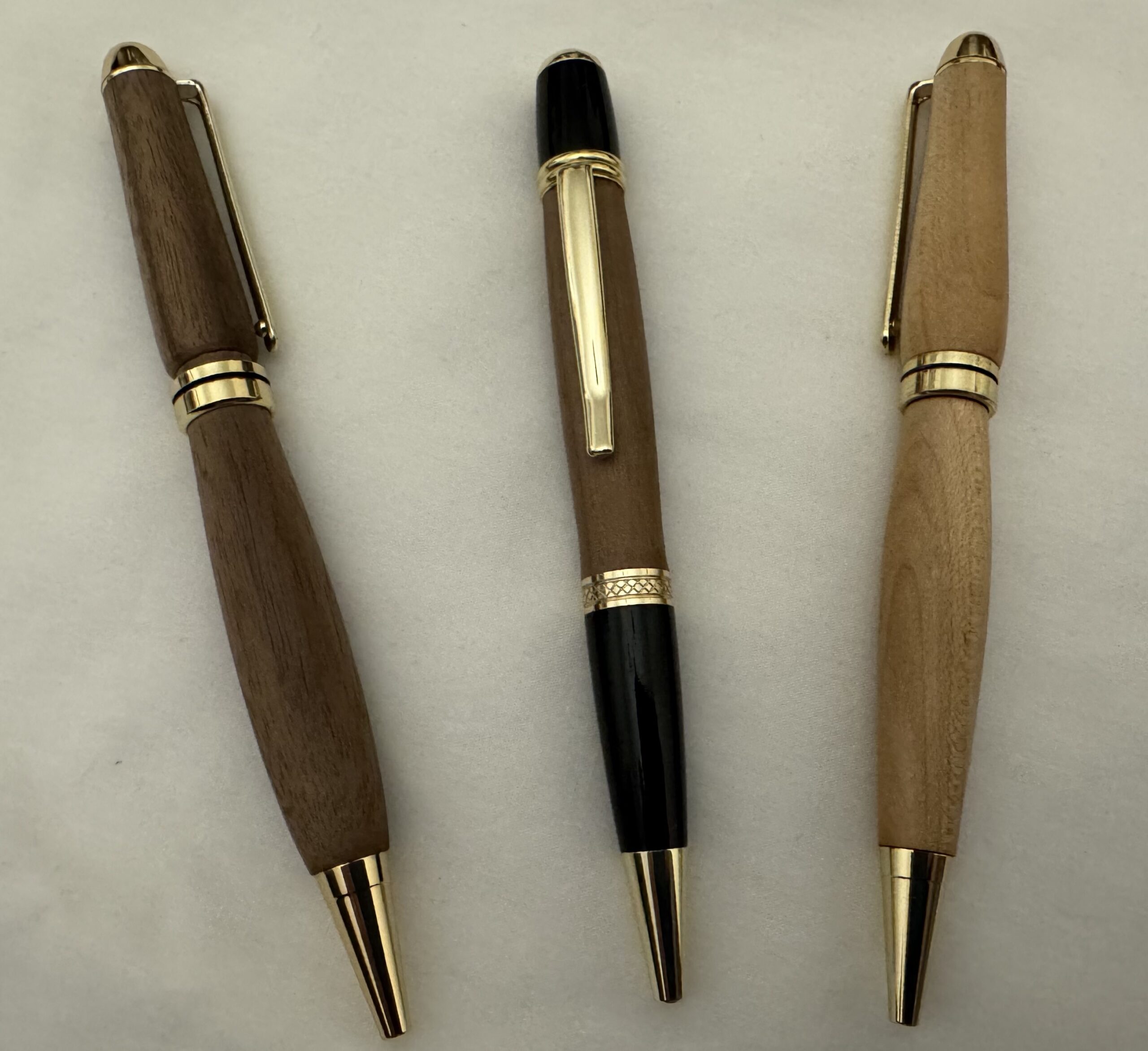
My First Attempt At Pen Turning
As someone who can’t write (in teh physical sense at least) I do see the irony in wanting to give pen turning a go. The intricacy and precision required to turn the perfect pen appeals to me, especially as precision is harder to achieve on a wood lathe than machinist tools.
-
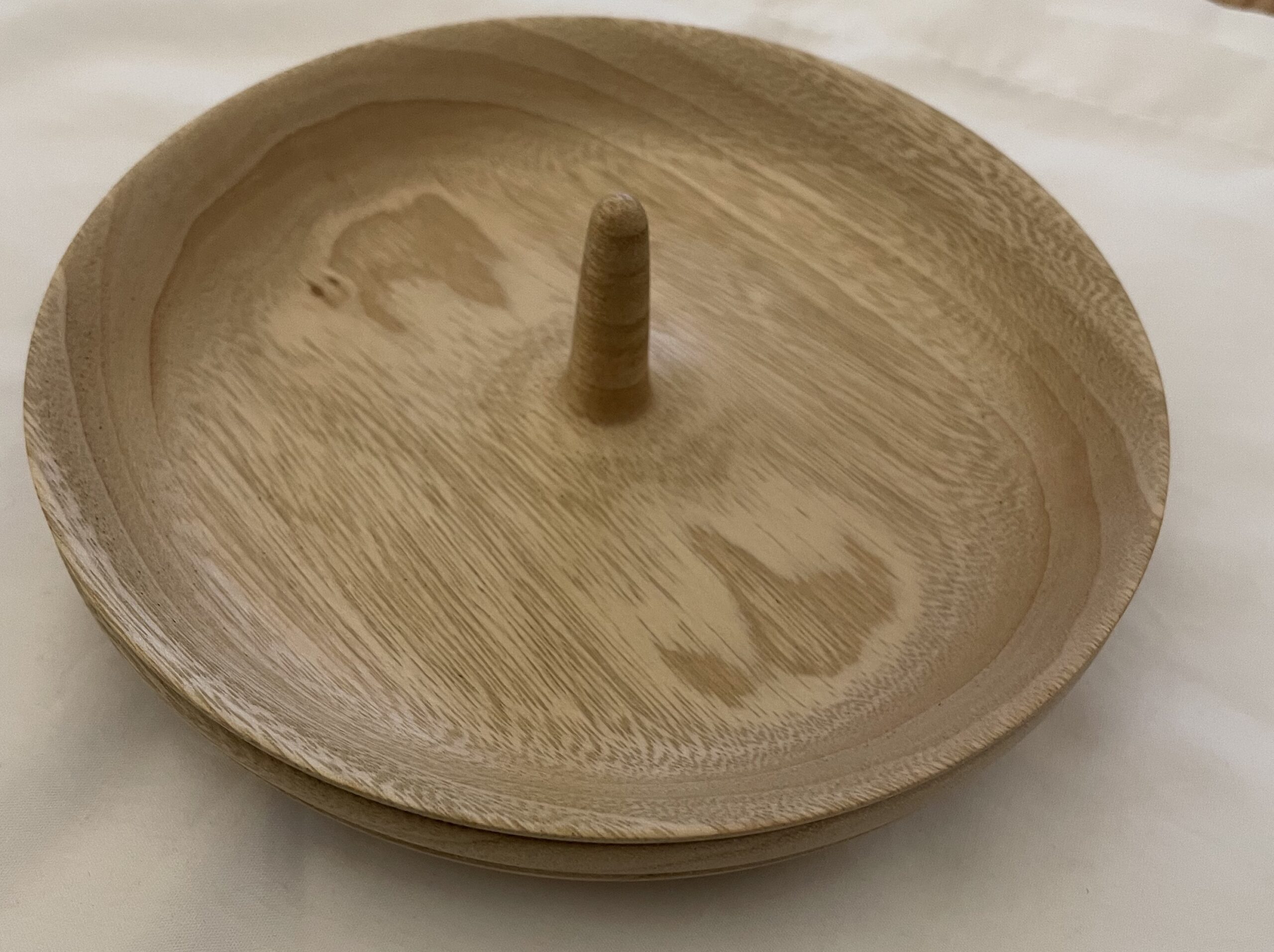
Jewellery Bowl / Trinket dish
A decorative yet functional jewelery bowl, ring dish or trinket dish. Finished in a natural oil finish.
-
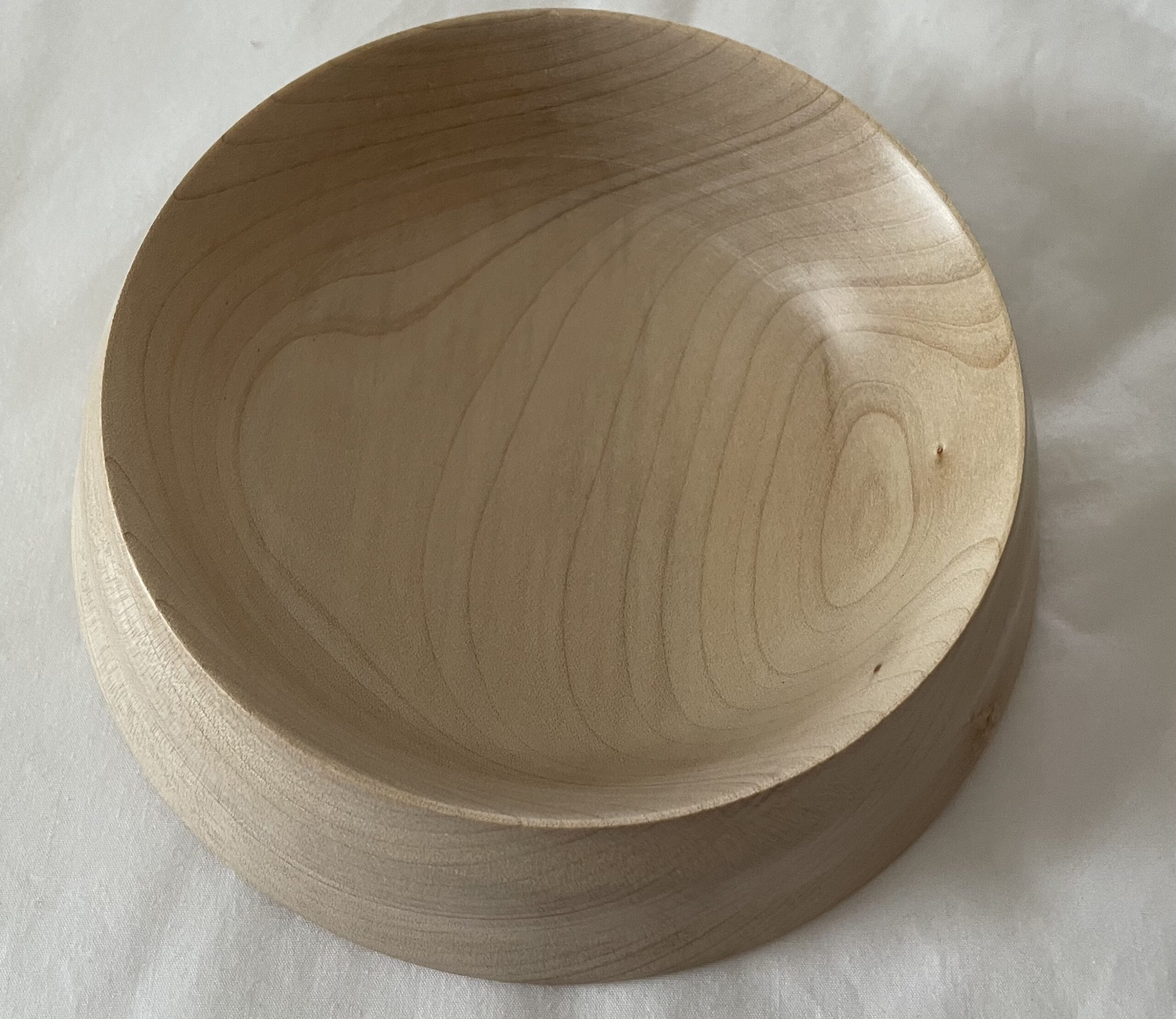
Sycamore Bowl
Sycamore, often referring to the American sycamore (Platanus occidentalis), is a striking and massive deciduous tree native to eastern North America. Known for its mottled, camouflage-like bark that peels off in irregular patches to reveal shades of brown, gray, and cream, it’s a familiar sight along riverbanks and in bottomland forests.
-
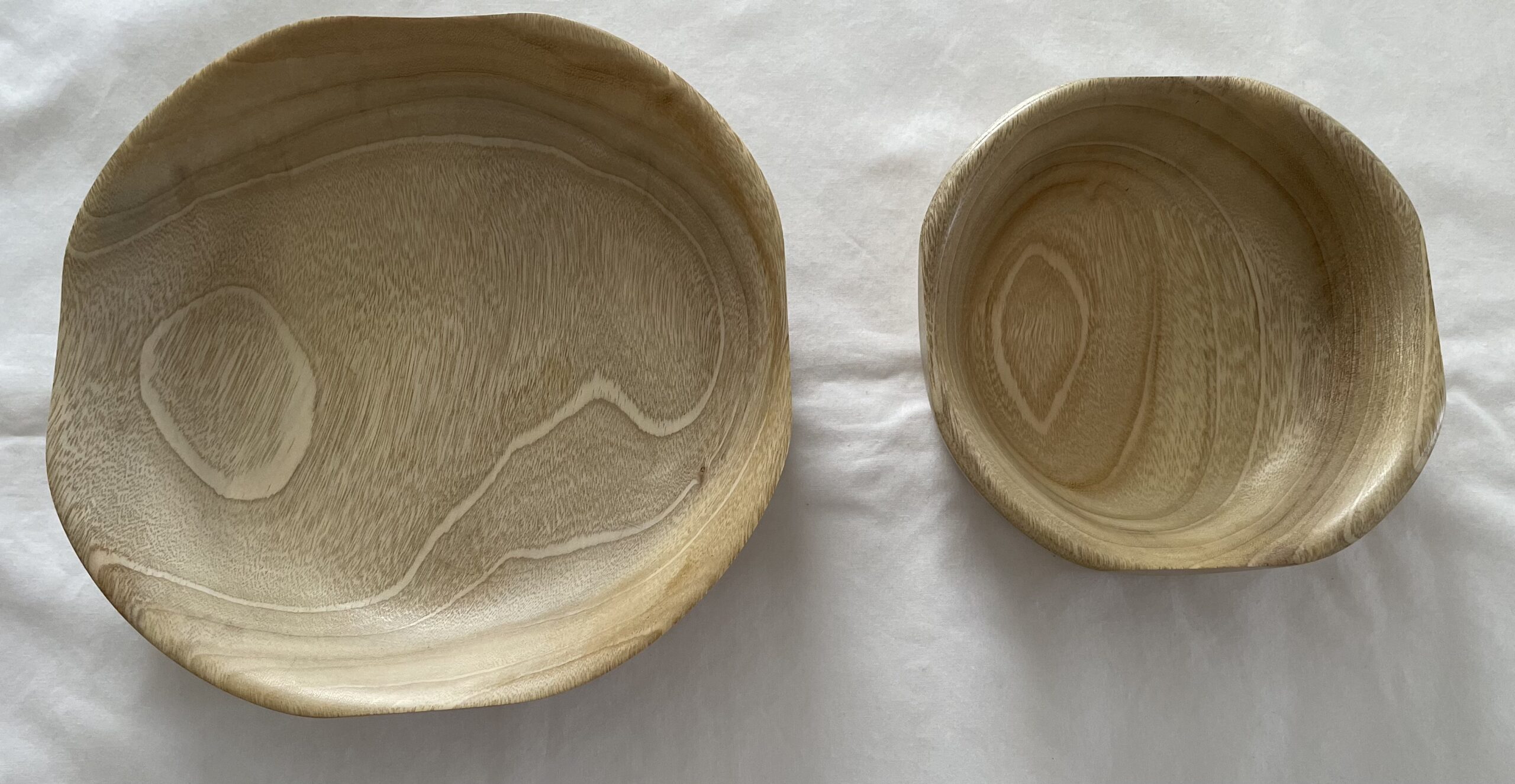
Octagonal Tulipwood Bowls
A matched pair of octagonal bowls in Tulip. The shape was formed simply by partially turning a square blank to form an octagon at teh top in which 4 of the edges are slightly curved.
-
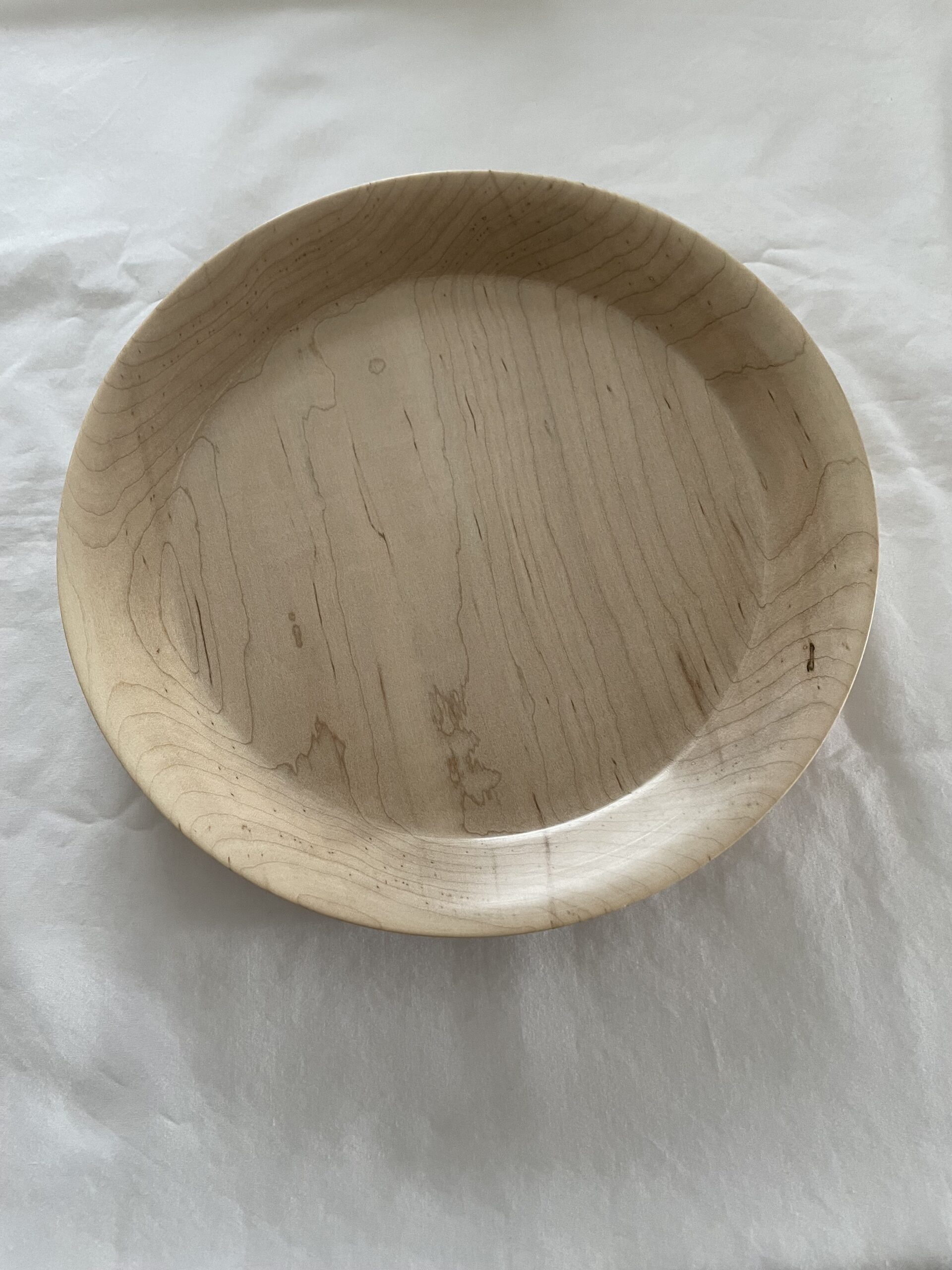
Maple Bowl
Maple is prized for its creamy, light color and fine, even grain, making it a popular choice for furniture and cabinetry. It’s a hard and dense wood, known for its durability and resistance to scratches and dents.
-
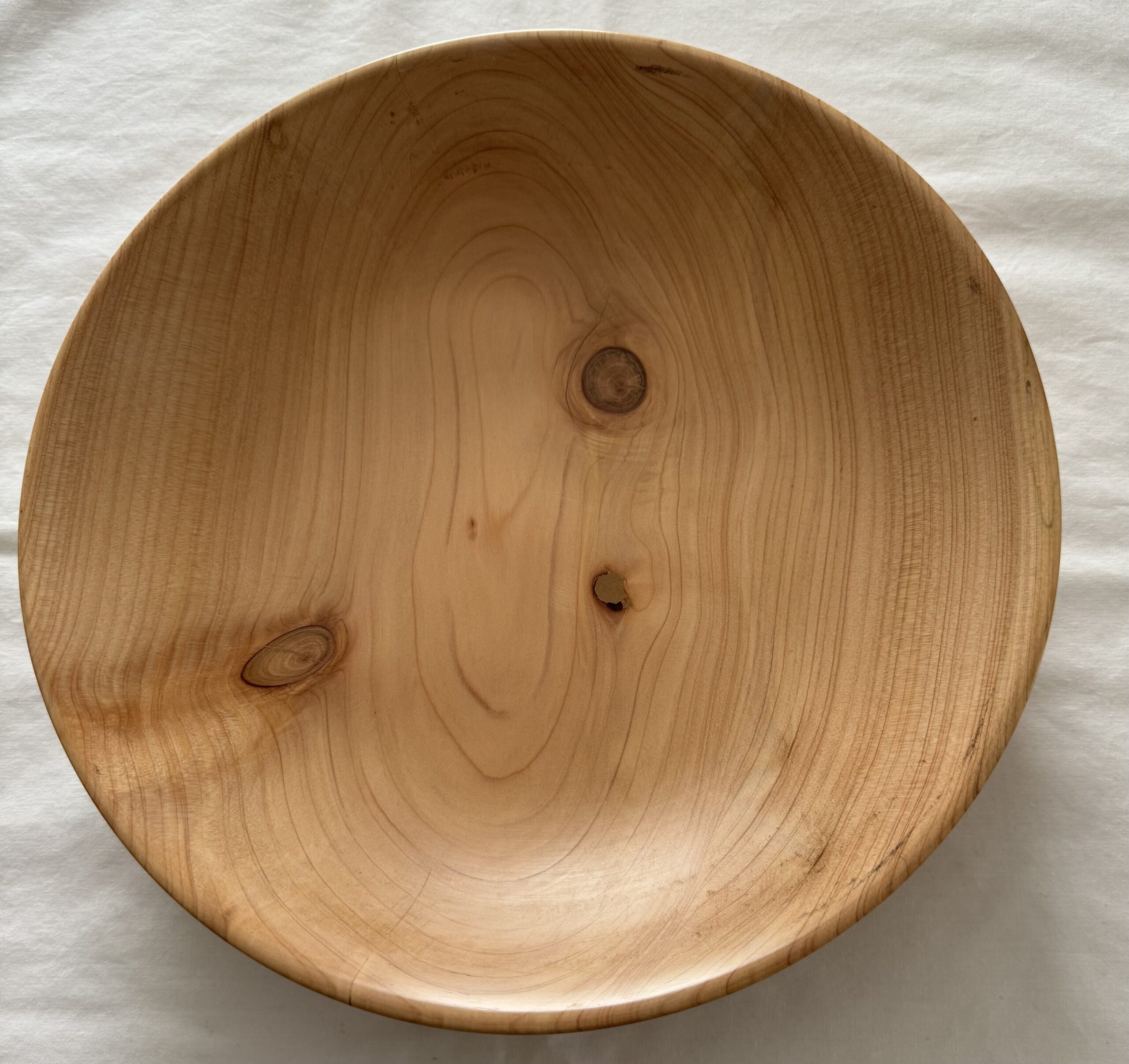
Macrocarpa Bowl
Macrocarpa wood, known for its durability and distinctive aroma, presents a character that’s both rustic and refined. Typically ranging from a light yellow-brown to a richer reddish-brown, its color deepens with age, often revealing beautiful knots and varied grain patterns.
-
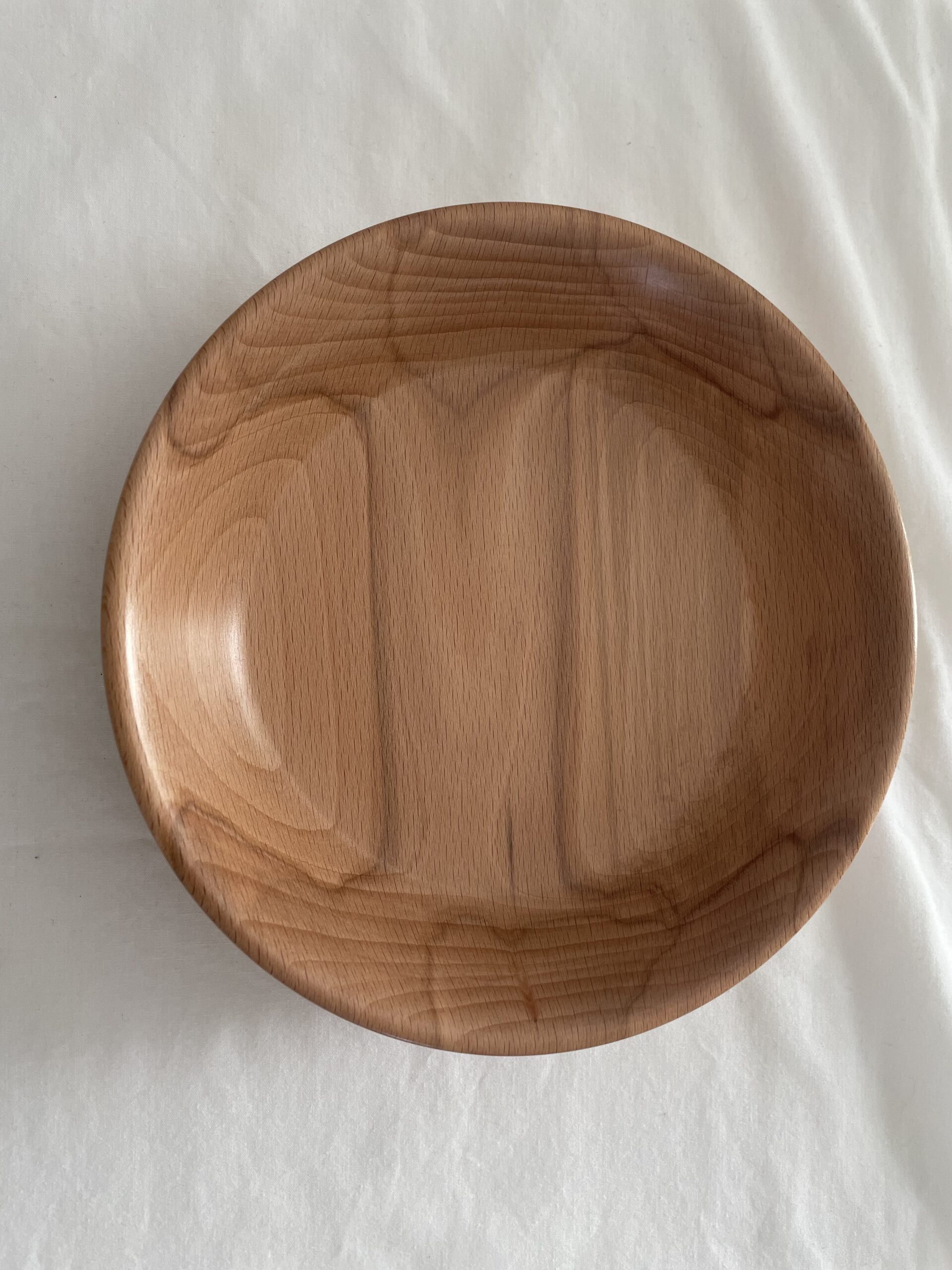
Bowls in Beech and Steamed Beech
Beech wood, in its natural state, is known for its pale, creamy color, sometimes with a hint of pink or tan. It has a fine, even texture and a relatively straight grain, making it a versatile and predictable material for woodworking.
-

rippled sweet chestnut Bowl
Rippled sweet chestnut, also known as “fiddleback” or “tiger stripe” presents a figure that arises from the undulating growth rings within the tree, creating a series of parallel, shimmering lines that appear to move and change with the angle of light. The wood itself is typically a warm, medium brown with hints of golden or…
-
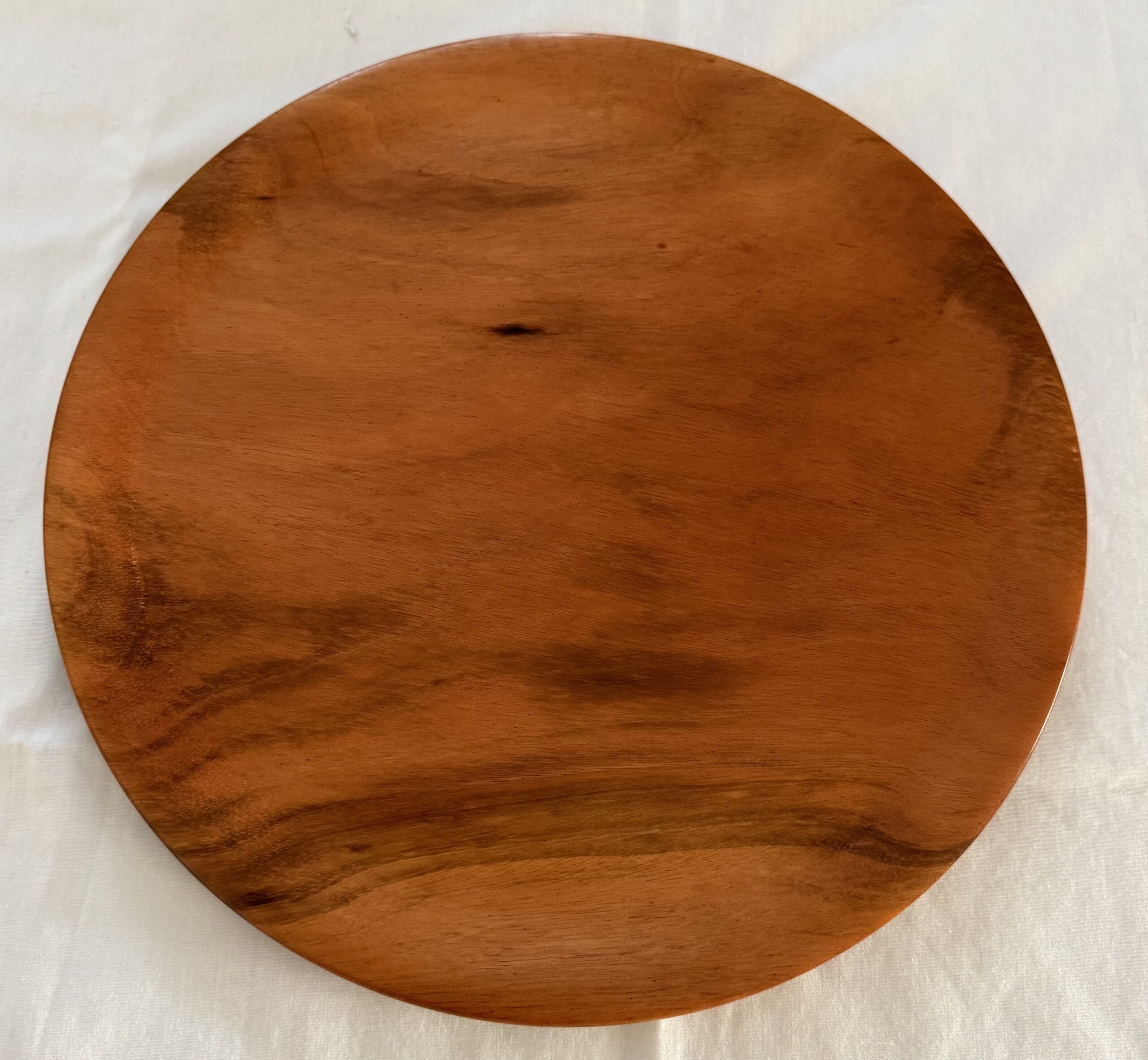
Tigerwood Platter
Tigerwood, also known as Goncalo Alves, is a striking hardwood known for its dramatic, contrasting stripes that resemble the pattern of a tiger. The tree itself, Astronium graveolens, is a relatively large tree native to Central and South America, often found in the rainforests of Brazil, Mexico, and Guatemala.
-
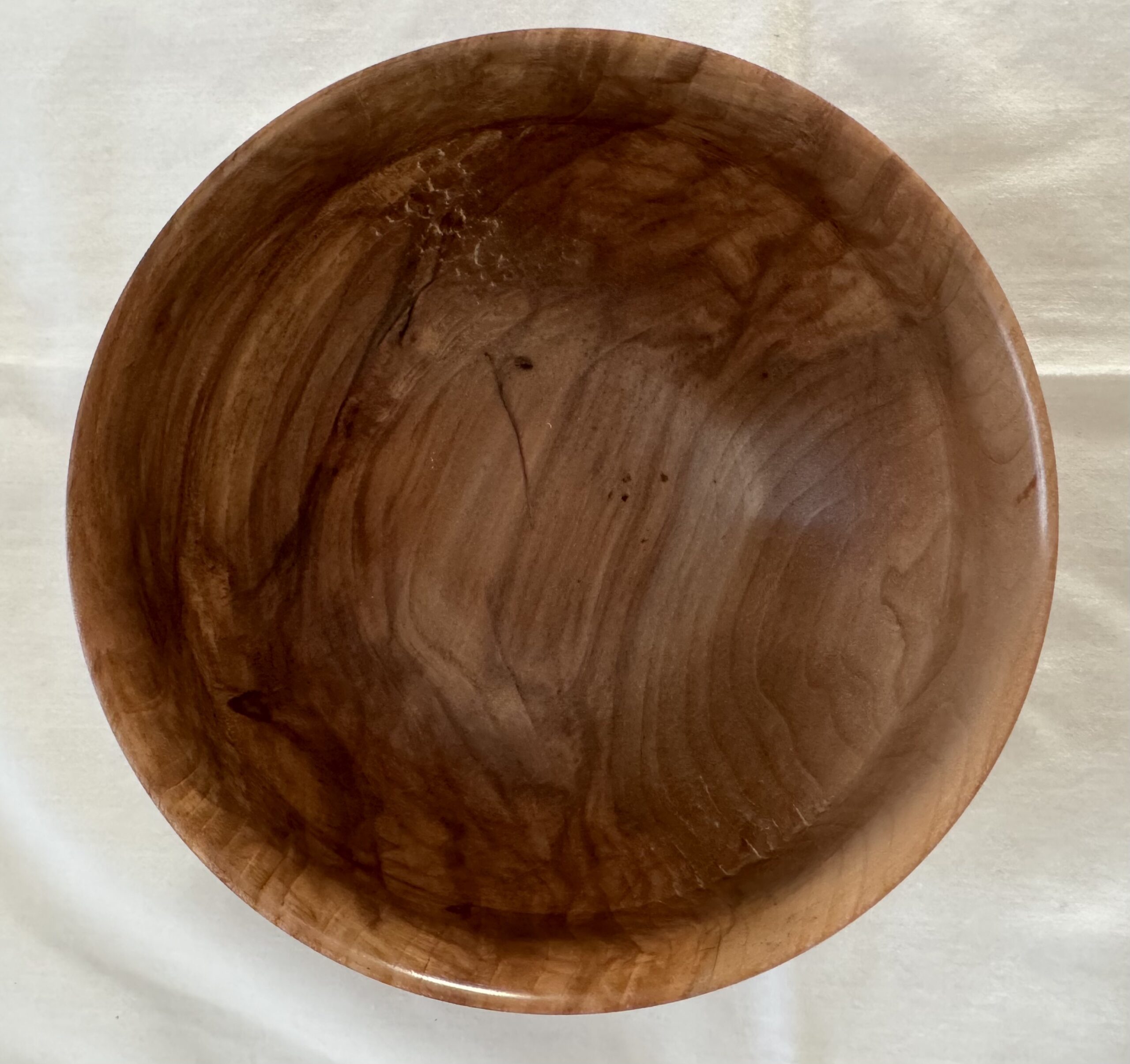
A pair of Apple bowls
A local tree surgeon was cutting down an Apple tree in the neighbourhood and kindly offered the wood for reclaiming. Having spent a couple of years seasoning and drying in the fresh outside air it has turned some lovely bowls.
-
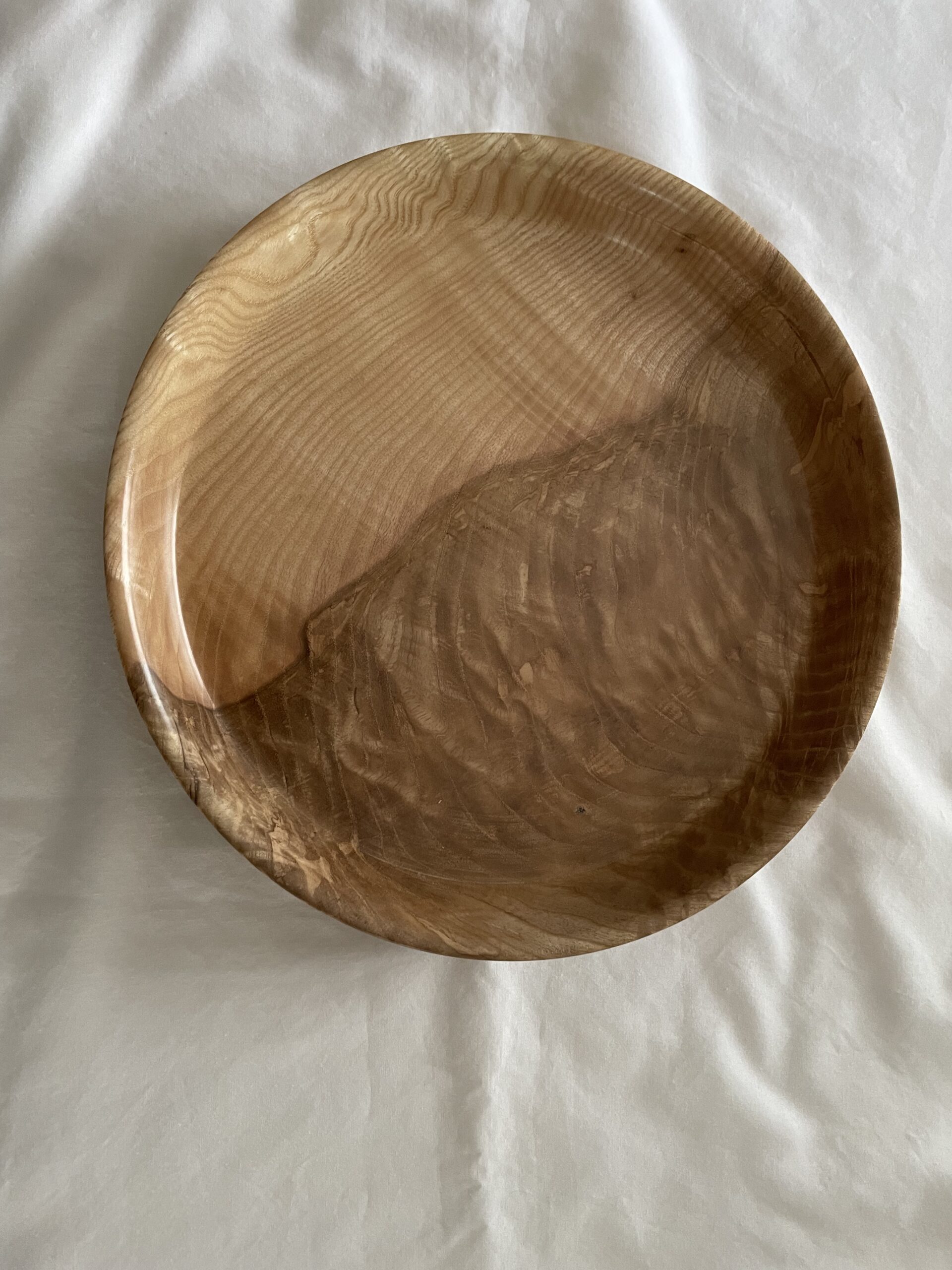
A special bowl in Crotch Olive Ash
Crotch olive ash wood, with its striking figure, is a testament to the beauty found in a tree’s most intricate points. The “crotch,” where the trunk splits into two or more large limbs, yields wood characterized by swirling grain patterns that converge and diverge in captivating ways.
